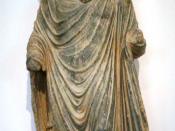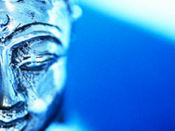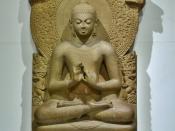How does the Buddhist religion tie in with the Tibetans, affect their cultural society in modern day, and through out the generations? Buddhism was born from the Hindu religion during the Axis period around 563-483 B.C.E. " Buddha was born Siddhartha Gautama, a prince of the Sakya tribe of Nepal, in approximately 566 BC. When he was twenty-nine years old, he left the comforts of his home to seek the meaning of the suffering he saw around him. After six years of arduous yogic training, he abandoned the way of self-mortification and instead sat in mindful meditation beneath a bodhi tree. On the full moon of May, with the rising of the morning star, Siddhartha Gautama became the Buddha, the enlightened one.
The Buddha wandered the plains of northeastern India for 45 years more, teaching the path or Dharma he had realized in that moment. Around him developed a community or Sangha of monks and, later, nuns, drawn from every tribe and caste, devoted to practicing this path.
In approximately 486 BC, at the age of 80, the Buddha died. His last words are said to be... "Impermanent are all created things; Strive on with awareness. "
(George Boeree)
Today there are over 350 million worldwide, who claim to follow the teachings of Buddha. One of Buddha's most important teachings was that of the Middle Way. His theory of the Middle Way is described in four main principles, also known as the Four Noble Truths. They are summed up in this: "suffering is universal, the cause of suffering is craving (selfish desire), the cure for suffering is to overcome ignorance and eliminate craving, and suppress craving by following the Middle Way--The Noble Eightfold Path." (Fritz Ridnerour). By following the ways of the eightfold path, it is believed that one...


